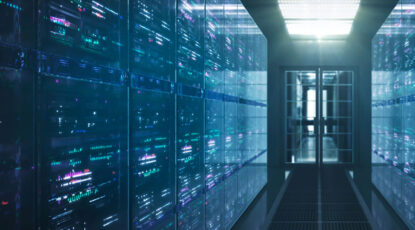Artificial Intelligence (AI) promises to be one of the greatest drivers of American productivity for the next decade. But, that very technology is placing a huge burden on an aging grid that could severely limit the growth of the data centers that are the engines of AI innovation. While the national economy endures the glacial speed of grid “modernization” efforts, fuel cells are poised to become a crucial, rapidly deployable power solution of the AI age.
Data centers have become essential over the past decade as hubs for everything from e-commerce to cloud-based services and storage. With the advent of AI, however, data centers have grown exponentially – there were 5,381 data centers as of March 2024 in the US, nearly half the world’s total, and 10 times as many as the next largest country, Germany.
And while data centers have become more efficient in their power usage since 2007, there’s been little improvement in the past five years. At the same time, they have grown far larger to meet the processing needs of AI models — the average data center today houses 100,000 servers, while Facebook parent Meta operates a 4.6 million square foot data center in Oregon.
Driven by the power demands of those servers – and the massive cooling systems they require – total energy demand in the US is expected to rise 15-20% in the next decade, according to DOE forecasts. By then, EPRI estimates that data centers could consume as much as 9% of all the electricity generated in the country. The scramble for that power is behind Microsoft’s announcement that it has purchased the mothballed Three Mile Island nuclear power plant, which it plans to restart to power its data centers.
All this is pushing the existing grid to – and even beyond – its design limits. EPRI notes that a single AI data center can use power equivalent to what would meet the needs of as many as 800,000 homes – one facility gobbling the same power as a city the size of San Jose. That demand is being made of a grid that’s already near the breaking point: Californians have become accustomed to enduring “rolling” blackouts when climate change-driven heatwaves crank up air conditioners, while Texans are still smarting from the blizzard-driven blackouts in 2021.
This potential has tech leaders greatly concerned. The CTO of Microsoft Azure said in a recent interview that the limits of the grid would cap the size of individual data centers, forcing companies to try to figure out how to link smaller ones together to replicate a larger center. That’s a complex problem that hasn’t been solved yet – and even those smaller data centers could still tax a grid that is years away from becoming more flexible and robust.
Without a solution, those AI data centers could well migrate offshore, undercutting the US lead in AI. So, the answer for data centers has to lie in another approach to meeting power demand. That’s where fuel cells can play a crucial role and why so many companies in the AI sector are choosing Bloom Energy.
With a delivery timeline of as little as 50 days, our fuel cells can be rapidly deployed at data centers as a baseline power source and used to supplement power from the grid. Crucially, they can enable data centers to operate as an “island” without a connection to the electric grid. That eliminates the need to locate data centers based on available grid power but instead lets companies site them based on other business considerations.
Bloom Energy’s fuel cells also help reduce emissions by using a highly efficient non-combustion process to generate cleaner, more resilient energy than conventional alternatives. This helps to address both the causes and consequences of climate change. Bloom Energy Servers offer deep decarbonization potential through their flexibility, including the ability to run on a variety of fuels, including renewable fuels like biogas and green hydrogen, and strong compatibility with carbon capture utilization and storage ecosystems.
With fuel flexibility that allows the Bloom Energy Server® to run on biogas or hydrogen, these fuel cells can provide zero emissions or carbon-neutral power, making them a cleaner choice and an efficient, sustainable alternative for data center onsite power generation.
Fuel cells uniquely address the energy demands of the AI sector – and are the key to unlocking the economic growth and benefits to society that come with it.



